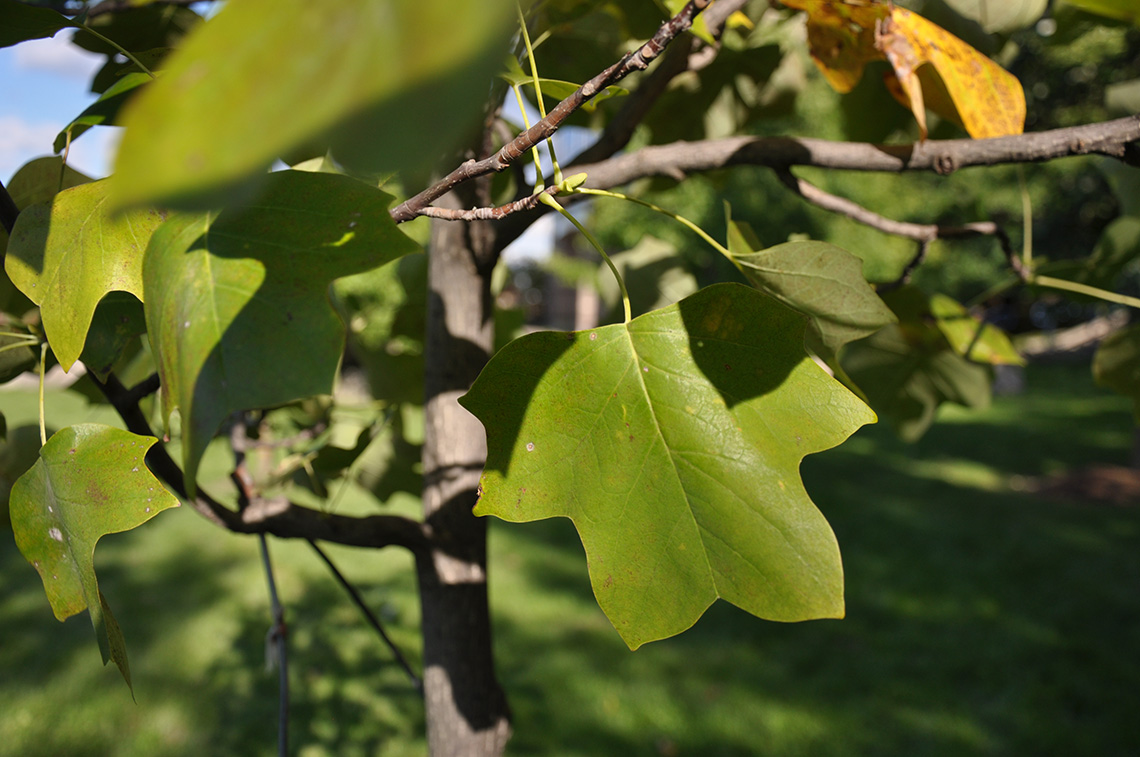Tulip Tree
 Botanical Name: Liriodendron tulipifera subsp. null
Botanical Name: Liriodendron tulipifera subsp. null Other Names: Tulip Poplar
Other Botanical Names: null
Family: Magnoliaceae Native to: Eastern North America
Hardy to zone: 5
Natural habitat: inner forests
Shapes: conical, round
Height: 70-80ft
width: 50ft
Growth rate: fast
Lifespan: 100-200 years
Unique attractions: fall colour
Common uses: landscaping
Insects: aphids
Diseases: sooty mold
Light: full sun
Transplanting: spring
Soil: tolerates heavy clay, ph adaptable

Known for its unique tulip-shaped leaves and flowers, the name Liriodendron means 'lily tree' and tulipifera means 'bearing tulips'. The Tulip Tree is Native to the forests of Niagara and the eastern United States and the indigenous peoples often used them for dugout canoes. In urban areas it is planted more often on lawns or parks rather than city street sides due to the relatively weak wood. With a straight central leader and upright habit, It is one of the fastest growing of shade trees in eastern North America.

Leaves
Leaf shape resembles the profile of a tulip. In the Fall, leaves turn to a nice golden yellow.

Bark
Greyish-brown with deep ridges and furrows.

Flowers & Fruit
Hidden flowers in early June resemble tulips. Flowers last for 2 weeks and smell like orange and vanilla. The fruit is cone-like.

Twigs & Buds
Buds are covered by just 2 bud scales and a powdery coating.
Pests & Disease
Lots of leaf-feeding insects including Aphids. Sooty mould may grow on the honeydew produced by the Aphids. Most pests are of low impact on tree health.